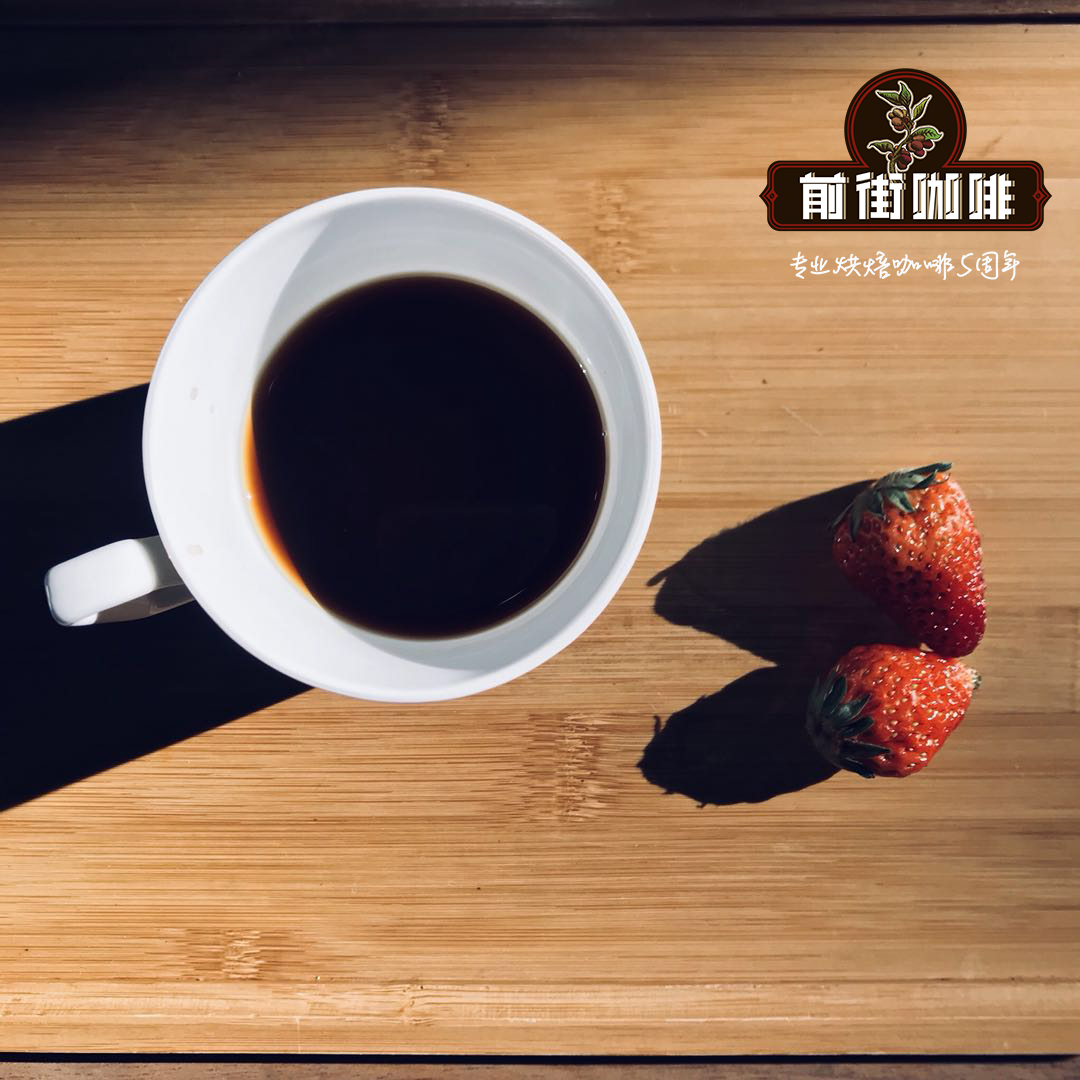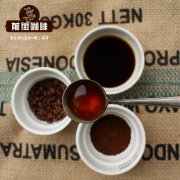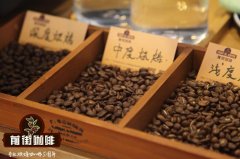There are so many kinds of coffee beans, how should beginners choose coffee beans that suit them?

Professional coffee knowledge exchange More coffee bean information Please pay attention to coffee workshop (Weixin Official Accounts cafe_style)
Don't want to waste money buying and trying different coffee beans over and over again?
Want to choose coffee beans that are "right for you"? Look at this right!
Are you a beginner?
Congratulations on seeing this article as soon as you started. Don't waste money buying expired coffee beans that taste oily, sour or unacceptably bitter, and in short, taste terrible.
Not a beginner, drinking coffee for years and not finding it delicious? Have the habit of brewing your own coffee, but always feel that it is not good to drink?
→ Then you should read this article, quickly check to buy coffee beans that don't suit your taste, where the problem lies…stop wasting money immediately.
PS: Do you have time to read the full story? Please skip to the crash course.
First step: fresh
Definition of Fresh Coffee Bean
It varies according to ambient temperature, humidity, packaging method and storage method. In terms of environmental conditions in Taiwan, coffee beans are stored in one-way breathable bags and placed at room temperature, and "within two weeks after roasting" are considered fresh coffee beans.
Roasted coffee beans, cooked food, of course, fresh!
Except for a few fermented and dried foods that have been specially treated for long-term preservation. The vast majority of food eaten into the body must be fresh. Coffee in your mouth is no exception. Coffee beans are the seeds of coffee fruits. Raw beans are like uncooked grains, which are easier to preserve. Roasted ripe beans are similar to roasted ready-to-eat nuts such as walnuts, peanuts, and pumpkin seeds. When stored at room temperature, it is easy to produce oil consumption smell.
Why is it difficult to preserve roasted coffee beans?
. First of all, the better the Arabica beans, the more fat they contain and the tastier they taste.
. After high temperature roasting coffee beans, cell walls are destroyed, the shell is brittle, and the contents of the coffee beans are more likely to come into contact with oxygen in the air and begin to decay.
If you care about cooking oil, you can understand that…oils with a majority of unsaturated fatty acids have poor tolerance to light, heat and oxygen. Therefore, high-quality olive oil, flaxseed oil, etc. are packaged in opaque glass bottles and stored in refrigerators. The best way to eat it is to pour it directly on food. Unsaturated fatty acids make up the majority of coffee oil, and of course they are no exception.
Chronic disease. not formed in one day
Well, you might say…many famous coffee shops and supermarkets sell coffee beans that have been roasted for many days or even months. Isn't that also a lot of people buying and drinking coffee beans? And you haven't heard of any emergency cases? I drank it myself, but I didn't feel sick, did I?
Modern society has so many strange "slow." Sex. Sickness is often caused by long-term consumption of chemically processed and stale food. Coffee beans are not fresh, although there is no risk of acute illness or immediate death. If you care about your health and that of your family, the first and most important thing is to drink only coffee brewed from fresh beans.
How do you know if it's fresh?
Judgment 1. Store management mode
Mark "baking date": Note that the baking date is marked on the purchase package, not the shelf life.
Second, in addition to the order baking, but also provide free choice of baking degree: roasted coffee begins to decline, taste. They advertise order baking, but they don't let you choose the baking degree. It is possible to bake a good batch of placed, there are orders to slowly ship the way in the business.
Judge 2, judge from coffee beans
Smell: Fresh beans have only aroma, smell of fuel consumption, it must not be fresh coffee beans.
Second, appearance: This only applies to the darker roast (aroma roast degree in the deep roast--deep roast) coffee beans. Before grinding, look at the coffee beans table. The oily feeling on the foggy surface means that it is not fresh coffee beans. To learn to judge this point is very simple, it is easy to see the market "only marked expiration date" coffee beans, buy back to observe know. Light roast (equivalent to aroma roast light-medium +) coffee beans are difficult to judge from the appearance of fresh beans.
Third, grinding: fresh coffee beans after grinding, regardless of hand or siphon, brewing is easy to see expansion or thicker powder layer.
Second move: flavor
Complex Flavor
Coffee is the most complex natural drink in the human world. Through our simplification, we can tell you what you have learned directly; let you not waste money and pick the coffee beans that suit you.
The Specialty Coffee Association of America (SCAA) has always been committed to defining the coffee language so that coffee lovers can communicate with each other. Good intentions and hard work are also commendable. Unfortunately, the contents are too complicated and unsuitable for circulation by the general public.
For now, academic scholarship aside, start from practical experience. Start with the following points to quickly pick your favorite flavor.
First understand how raw beans are processed
Washing beans is the best way to remove impurities and preserve essence, and ensure the consistent quality of coffee beans. Water-washed raw beans, acid bright, clean, less miscellaneous flavor.
Sun-dried beans: The ripe coffee fruits are picked, sun-dried and then processed. This method can completely retain the fruit content; bring low fruit acidity, thick aroma, sweetness, taste and other high-quality flavor.
"Honey treatment" 100% pectin is reserved and dried on a shelf off the ground. The honey-treated coffee beans retain the sweetness and aroma of the coffee pulp, and have a heavier taste than the washing method.
"Wet planing beans" Remove seed shells in advance and carry out drying procedures. This helps to shorten drying time quickly and reduce the sourness produced by fermentation of green coffee beans. Also created a mellow, woody, fruity, fairy grass flavor.
Wind Stain Bean has been exposed to humid monsoon environment for a long time. The color of coffee beans changes from dark green to brown rice, and the fruit acid flavor of coffee is almost gone. Fengzidou has a strong nutty and shell flavor, drinking tea feeling full, very similar to the flavor of black rice tea.
Correlation between processing methods and flavor of green beans
Compare this to the "same coffee fruit".
Flower fragrance washed beans> honey treatment> sun beans> wet planed beans> wind stained beans
Sun dried beans> Honey treatment> Wet planed beans> Washed beans> Wind-soaked beans
Acidity washed beans> honey treatment> sun beans> wet planed beans> air-soaked beans
Sweetness Solarized beans> Honey treatment> Wet planed beans> Washed beans> Wind-soaked beans
Finally, match the baking degree (see DOWN)
Third move: baking degree
The Importance of Baking Degree
From the second wave of "heavy baking" to the third wave of "light baking". The modern coffee wave changes, that is, starting with different roasting degrees.
Think about the tea experience?
Light fire baking → light fragrance, light taste (light throat rhyme) → medium fire baking → elegant aroma, sweet taste (good throat rhyme) → heavy fire baking → steady aroma, sweet taste (best throat rhyme)
From shallow to deep, different baking degree of tea, aroma, taste is not very different? Coffee roasting is the same way...
Roast vs. Flavor
Light-medium roast + coffee beans
Light baked: full aroma, fruit acid flavor is particularly strong. Suitable for those with special needs.
Medium roast: retains most of the aroma, bright acidity; recommended for coffee "the lightest roast for beginners"
Medium Roast +: Fruit Acid Soft & Sweet
Because the cell wall is not damaged much, and most of the oil is still preserved in the cell wall of the bean body. The degree of carbonization is not deep, and the aroma and acidity of the beans themselves are retained (the special terroir/regional flavor of the region). Fine coffee beans are roasted to high quality and can be drunk with fruity/fruit acids such as apples, lemons, oranges, etc.
Medium and dark roast coffee beans
Medium and deep baking: sacrifice most of the acid, aroma, caramel reaction brought flavor → caramel, nuts, malt, chocolate and other aromas began to highlight.
Deep roast: full-bodied taste, caramelization of excessive flavor to start bitter. Because of the larger fire baking, there is a clear woody, smoky smell.
Carbonization of cell walls and extraction of coffee oil add to the mellow taste. Deep roast will have a more obvious nutty, caramel, chocolate flavor, deep roast coffee beans are easy to drink wood, spices, smoke and other flavors.
I put together for you.
No time to read the long story? Look at this paragraph…
Coffee beans must be fresh.
Because... expired coffee beans "oil smell" enough to overshadow all good taste.
Coffee beans are stored in one-way breathable bags and placed at room temperature."Within two weeks after roasting" are considered fresh coffee beans.
"Selection method" Select "order roast, can customize the roast, marked roast date" coffee beans.
Flavor & Roast Selection
Love "Flower, Fruit Acid"
Love "Flower, Fruit Acid"
Choose washed beans, light baking> medium baking> medium baking +
Loved the fruit.
Loved the fruit.
Select sun beans, honey treatment, light baking> medium baking> medium baking +
Love Chocolate, Nuts, Malt Flavors
Love Chocolate, Nuts, Malt Flavors
All kinds of beans can be used, and the baking degree can be selected as "medium deep baking"
Love Woody Aroma, Non-Acid & Slightly Bitter Flavor
Love Woody Aroma, Non-Acid & Slightly Bitter Flavor
All kinds of beans are available, and the baking degree is selected as "deep baking"
"Air-soaked beans" with various baking degrees are not sour, followed by "wet beans with medium and deep baking, deep baking" baking degree is not sour
Important Notice :
前街咖啡 FrontStreet Coffee has moved to new addredd:
FrontStreet Coffee Address: 315,Donghua East Road,GuangZhou
Tel:020 38364473
- Prev

Types and characteristics of coffee in America, Asia and Africa with pictures how to classify Arabica coffee beans
Professional coffee knowledge exchange more coffee bean information please follow the coffee workshop (Wechat official account cafe_style) appreciation of coffee trees from all over the world is a genus of Rubiaceae in botany. Coffee trees are native to subtropical Africa and some islands in southern Asia. In the 16th and 17th centuries, through the merchants of Venice and the Dutch hegemony at sea
- Next

The variety of coffee beans is not complicated, there is a secret to find the right coffee beans for you!
Professional coffee knowledge exchange more coffee bean information please follow the coffee workshop (Wechat official account cafe_style) if you do not know how to find the right coffee beans, the best way is to go to your favorite cafe and ask local baristas or bean bakers for advice. They can give you directions and even share some beans generously.
Related
- Beginners will see the "Coffee pull flower" guide!
- What is the difference between ice blog purified milk and ordinary milk coffee?
- Why is the Philippines the largest producer of crops in Liberia?
- For coffee extraction, should the fine powder be retained?
- How does extracted espresso fill pressed powder? How much strength does it take to press the powder?
- How to make jasmine cold extract coffee? Is the jasmine + latte good?
- Will this little toy really make the coffee taste better? How does Lily Drip affect coffee extraction?
- Will the action of slapping the filter cup also affect coffee extraction?
- What's the difference between powder-to-water ratio and powder-to-liquid ratio?
- What is the Ethiopian local species? What does it have to do with Heirloom native species?

